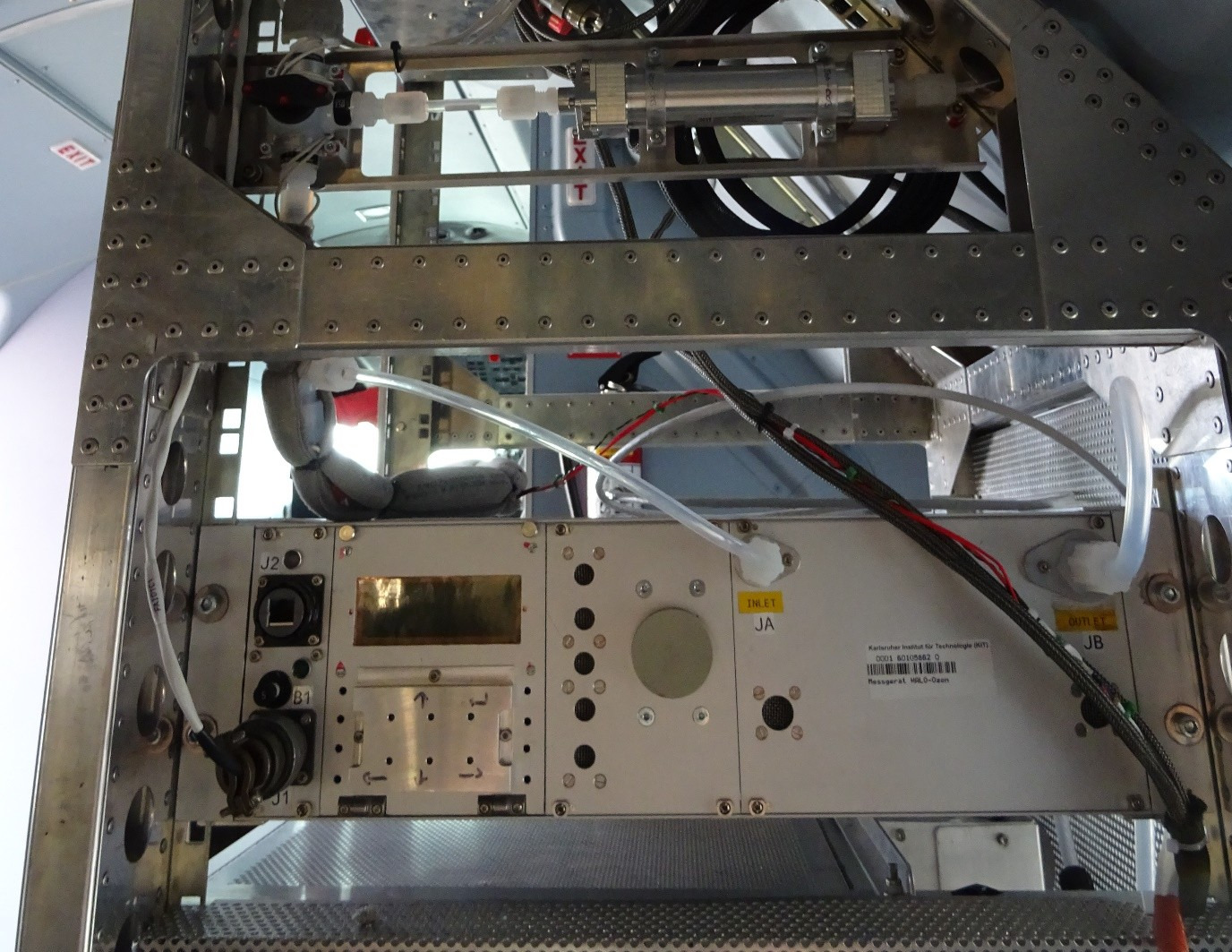Fast Airborne Ozone Measurements

FAIRO is fully custom-made instrument that combines two measurement techniques:
- 2-channel UV photometry based on the absorption of UV light by O3
- Solid-state chemiluminescence detection based on the chemiluminescence (light emission) of O3 at the surface of an organic dye adsorbed on dry silica gel
The strengths of FAIRO are:
- Compact (19” system, height: 13.5 cm) and light-weight (14 kg)
- Fully automated
- Both detectors work at the physical limit, that is, are quantum-noise limited
- High-accuracy (precision: ~0.1 ppb) and high speed (10 Hz), and thus a factor of >10 more precise and >20 faster than commercial instruments
FAIRO is operated as of 2005 on passenger aircraft and as of 2012 during ~20 research campaigns on board the research aircraft HALO and on two US research aircraft.

